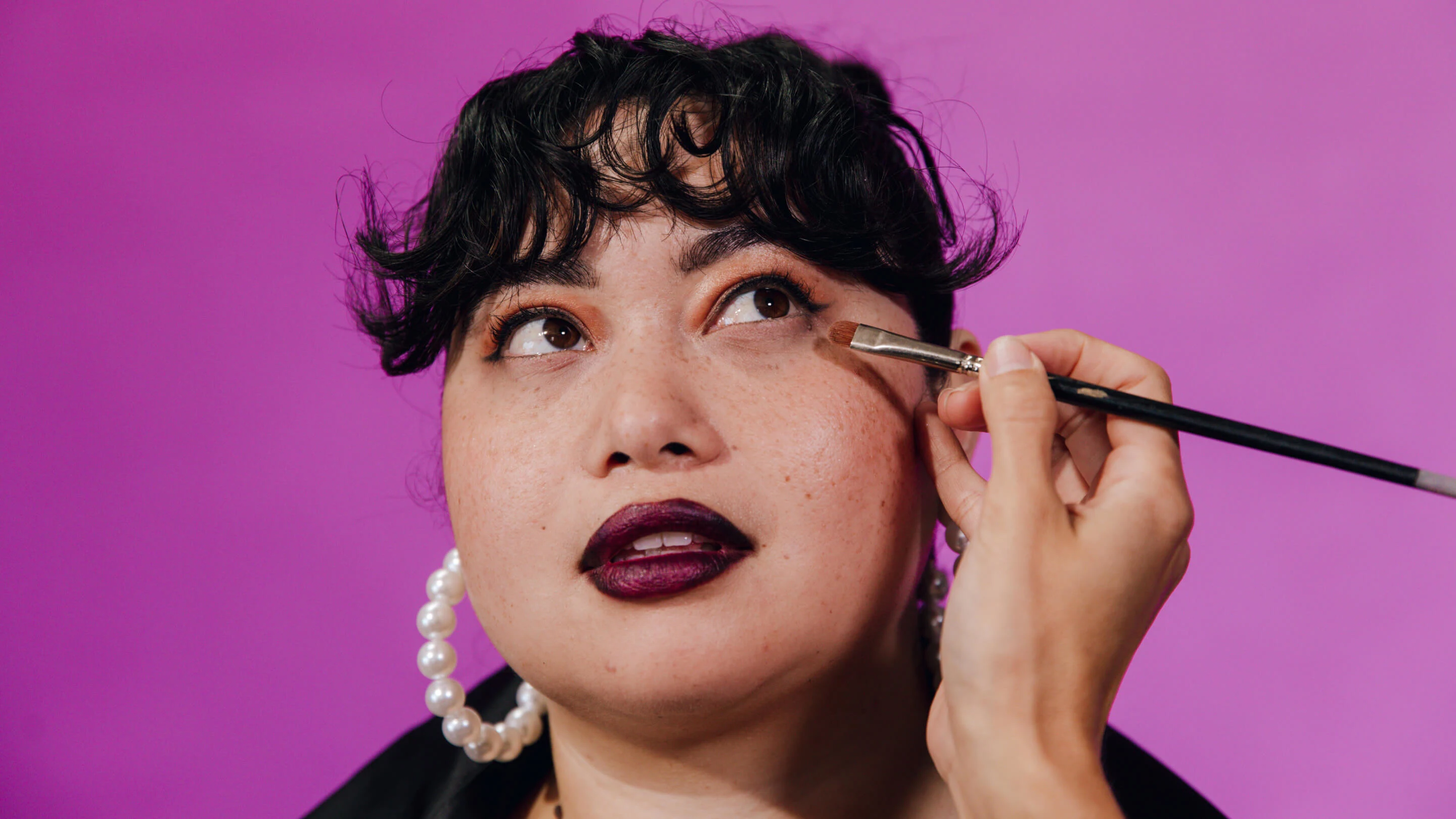Logic and emotion coexist in our brain when customers are making purchase decisions on Pinterest. Working with the creative effectiveness platform System1, we wanted to test the hypothesis that to drive action, advertising should balance the emotional and rational.
Advertising is everywhere, and people’s attention spans are being pulled in all directions. As an industry, we’re becoming more conscious of bombarding our customers. We obsess over their behaviors to be more mindful in how and where we show up. Researchers like Orlando Wood, System1’s Chief Innovation Officer, have spent the last 20 years proving that emotion is the key to unlocking greater effectiveness in advertising. But marketers still struggle with the balance—creating highly branded creatives that elicit an emotional response.
Look at this year’s Big Game: Most of the ads clearly use emotional advertising strategies to unlock world-class effectiveness, yet some are still stuck relying too much on celebrities, rational messaging or failing to link the creative to the actual brand.
Pinterest is where audiences are searching for inspiration and discovering their favorite products. And Pinterest weekly users are willing to pay more—40% more per month in fact, than people on other social platforms.1 That’s a powerful statistic for advertisers. But when it comes to functional messaging over emotional messaging on Pinterest, what really works? We believe that audiences may find a product’s emotional benefits as well as the functional benefits equally important.
We teamed up with System1, a creative effectiveness platform that measures emotion through neuroscience, to dig deeper into our hypothesis.
Ads on Pinterest that received an above-average positive emotional reaction drove a +20% higher lift in recall and a 6x higher lift in action intent2

Are you paying attention?
In Wood’s book “Look Out”, he is inspired by psychiatrist Iain McGilchrist’s work to describe the different types of attention. He describes the right hemisphere of the brain as presenting the world to us and grounding us in it by means of alertness and sustained attention. Sometimes we see something of interest and pass it on to the left hemisphere, which examines the object of interest more closely using focused attention. He explains that we always see ‘the wood’ with our right hemisphere, using what we might call ‘broad-beam attention’, before we see ‘the trees’ with our left hemisphere, which is known as ‘narrow-beam attention’.
What does the research tell us?
So, do rational or emotional messages drive higher recall, favorability and intent towards a brand?
In order to understand this, the Pinterest team looked into brand lift in visual analysis—looking at 36 CPG campaigns and over 100 ads in five different markets across Europe. System1 tested creative with emotional analysis. The more emotional ads led to 1.5x more action intent and +73% better brand favorability.3 This is interesting because there’s a long held belief that emotion drives better memorability—but we found that action intent is the metric with the most positive lift in both analyses—a much more valuable metric for success.
Meanwhile, System1 showed 50 ads to 150 respondents to understand users’ actual emotional reactions to the creative. System1’s Test Your Ad platform assigns a 1 to 5.9-Star Rating based on the emotional response viewers have to the ad, which demonstrates an ad’s ability to drive long-term growth. It also provides a Spike Rating, derived from the strength of branding and the intensity of the emotional response, which predicts short-term sales potential.
We discovered that when ad creatives drove an above-average positive emotional reaction (measured by System1’s Star Rating), the ads had a +20% higher lift in recall and a 6x higher lift in action intent—figures that will dramatically increase the long-term effectiveness of campaigns.2
When looking at the emotional intensity of consumer reactions to both product and non-product focused creatives, they saw that emotional intensity is the key to driving short-term effectiveness.
Product-focused creatives with higher-than-average emotion intensity saw a 140% increase in action intent.2
System1 also analyzed the assets to understand how creative with more right-brained features changed campaign effectiveness. Creative with more right-brained features (especially a clear sense of place, characters with agency, stories unfolding, etc) and fewer left-brained features (words obtruding, abstracted body parts or products, repetition, etc) saw an almost 2x higher lift in brand favorability.2
“We know that ‘right-brained’ creative is more likely to achieve brand trust, so it is no surprise to see ‘right-brained’ advertising also generate greater brand favorability on Pinterest,” System1’s Wood said. “Why does this matter? Because we also know that brand trust is becoming an increasingly important indicator of strong business outcomes.”
Showing consumer emotional intensity is key at driving short-term behavior change for both styles of creative.
The work doing the work.
So there we are. Advertising needs both. Logic and emotion working together side by side to reach audiences at every stage of the purchase journey. One message, one objective is all well and good but if you’re looking for maximum impact, multi-objective campaigns with a balance of emotion and function help advertisers succeed on Pinterest.
These advertisers put the proof in the pudding:
Pasta brand Barilla drove high viewability of 73% of a video-based ad campaign on Pinterest, achieving an increase in Pin awareness of almost +10 pts.4 The brand created four-second max width videos that focused on the product and highlighted the variety of Barilla Collezione.
Keyword targeting for meal time searches caught audiences’ attention while highly branded ads brought the message home—balancing emotion and rationality. The high level, top of the funnel awareness campaign generated high-quality traffic to their website alongside considerable campaign awareness uplift.
Colgate also used video Pins to increase brand visibility as well as build an emotional connection to their customers and achieved a remarkable viewability of 91%.5 The toothpaste brand’s “Smile for Good” campaign is part of Colgate’s mission to provide a little optimism every day. This emotive campaign spoke to people on Pinterest searching for optimism. An emotional campaign with purpose that had product at its heart.
Leading make-up brand Clarins took a more holistic approach. Their multi-objective strategy cuts through the noise whilst helping Clarins stay relevant and top of mind—connecting to customers during moments of discovery as well as speaking to them at the moment they're ready to take action. Clarins built the campaign that spoke to female beauty lovers ages 30 years older, leaning into Pinterest’s visual platform—and ready-to-buy audience.
“
Pinterest is perhaps unique as a platform in that it provides for both goal-orientated search (for narrow-beam attention) on the one hand and for those in the market for expression, exploration and entertainment (for broad-beam attention) on the other.”
Orlando Wood, System1
The reality is: Facts and product information can elicit just as much of an “emotional” response and engagement when presented in the right way—and a lot more sales. Give people very good reasons to buy whatever it is you’re selling and make it relevant so that customers can relate.
Simply put, an emotional message that makes us feel something gets passed onto the left hemisphere to rationally consider making a purchase—and hopefully into action.
Attention + emotion = action.
To drive consumers from discovery to decision, your advertising needs both in order to be optimally effective.
Act on the insights
01
Know your audience
Make sure your ads are relevant to the people you’re trying to reach. Align the content and creative with the context of Pinterest user searches and interests.
02
Moments matter
Referencing shared cultural moments, like holiday gifting or large sporting events, can tap into memory structures and trigger positive responses. But keep a varied range of situations in your campaign creatives to avoid ad fatigue.
03
Sell them with a story
Consider characters, places and humor in your creative to stop consumers in their tracks and build long-term effectiveness. CPG brands in particular should home in on product-focused ads that show delicious food and drink being enjoyed by emotive people, preferably together. This right-brained experience enables product-focused assets to build long-term effectiveness.

